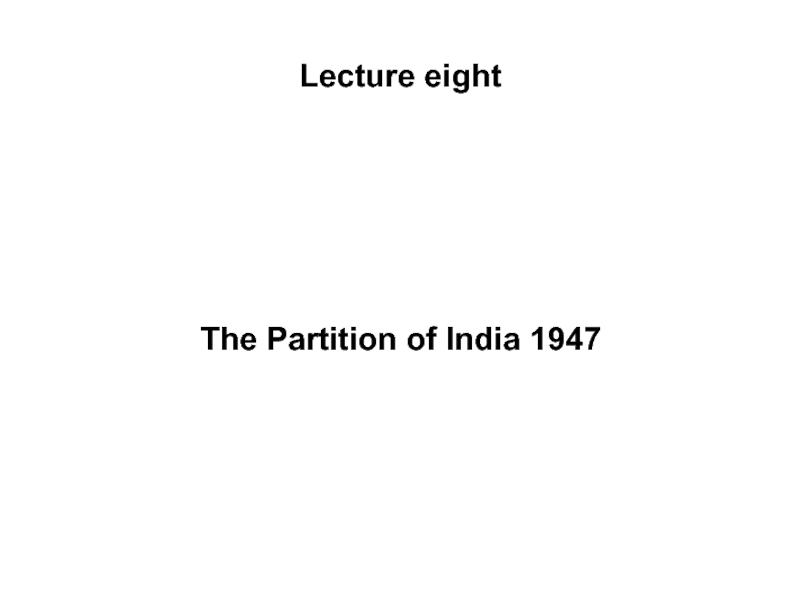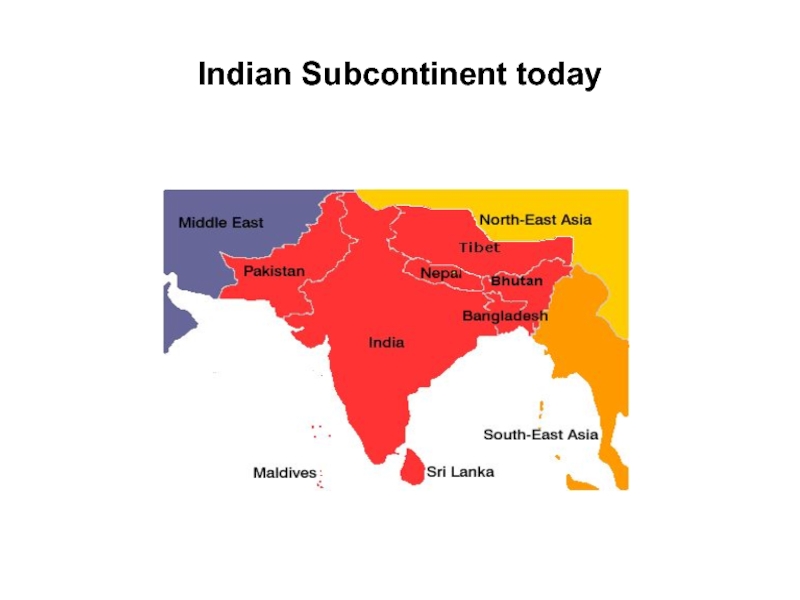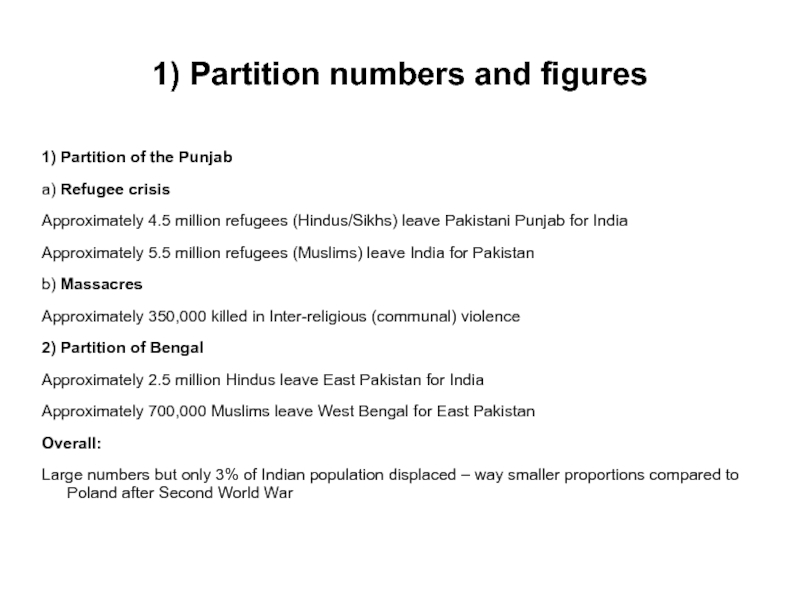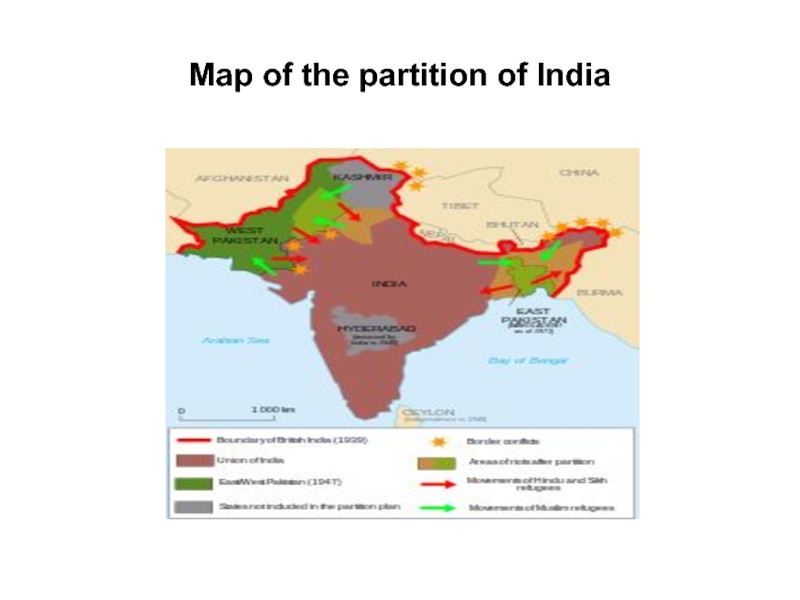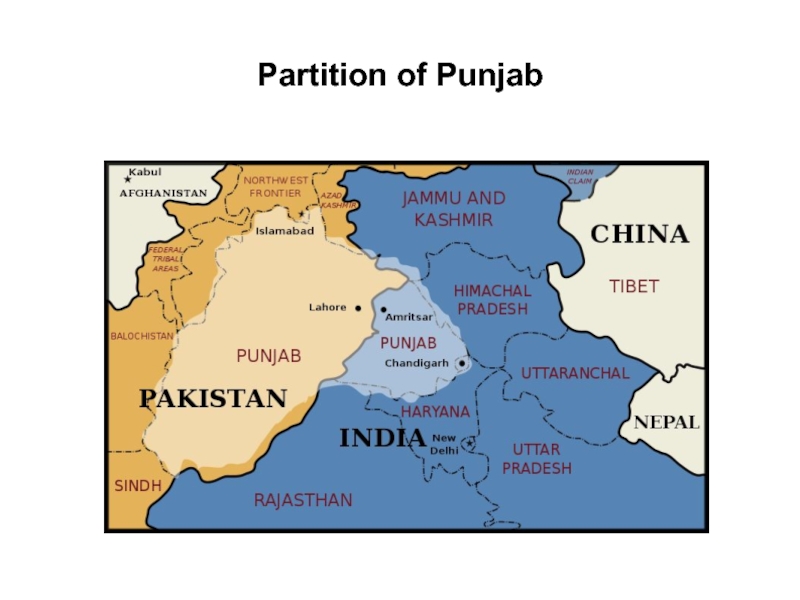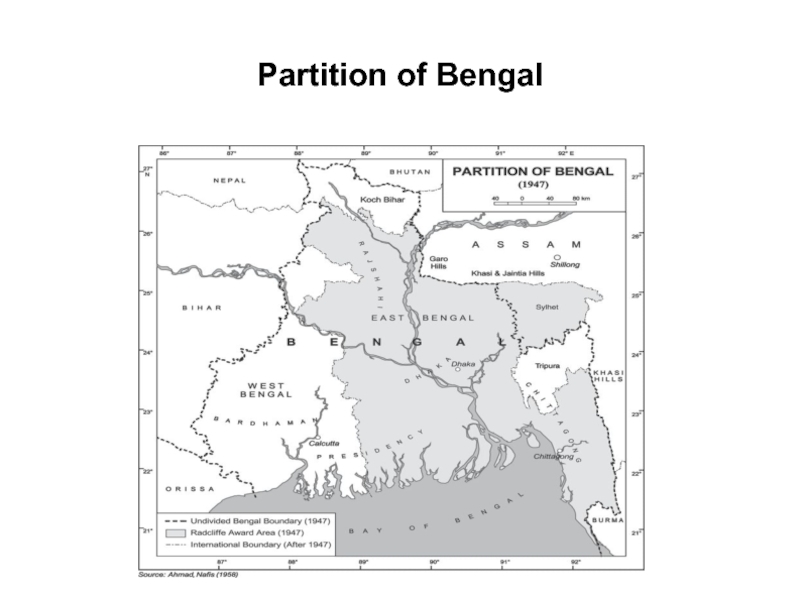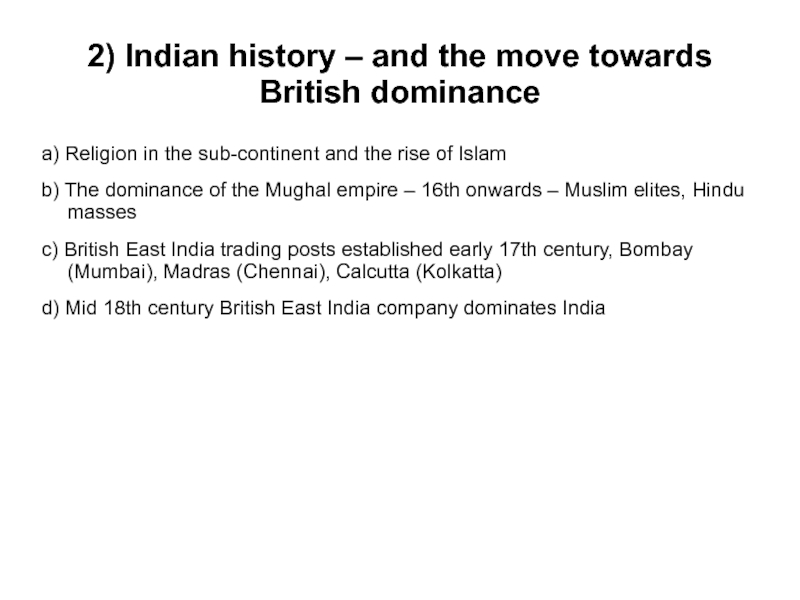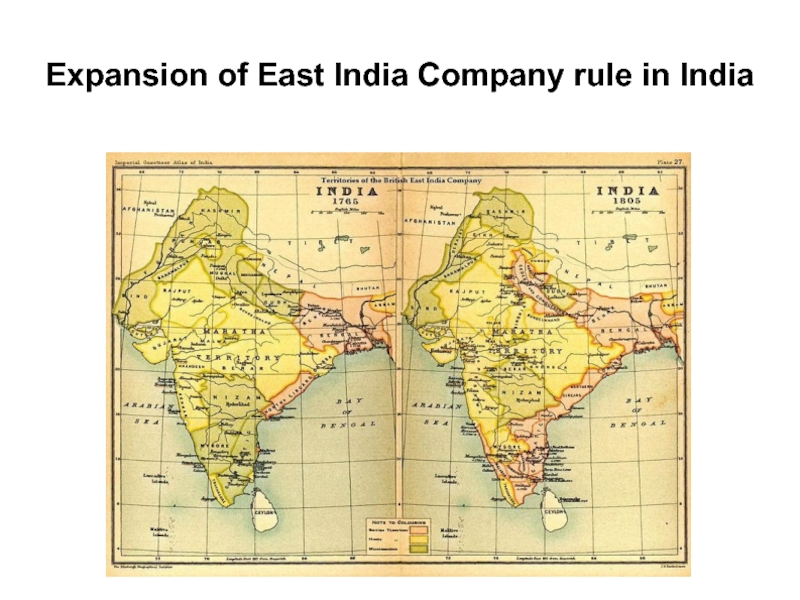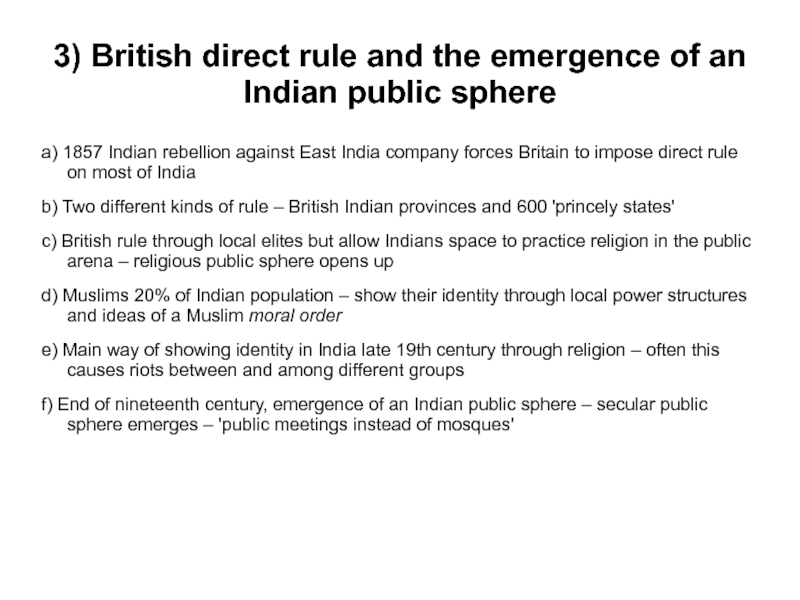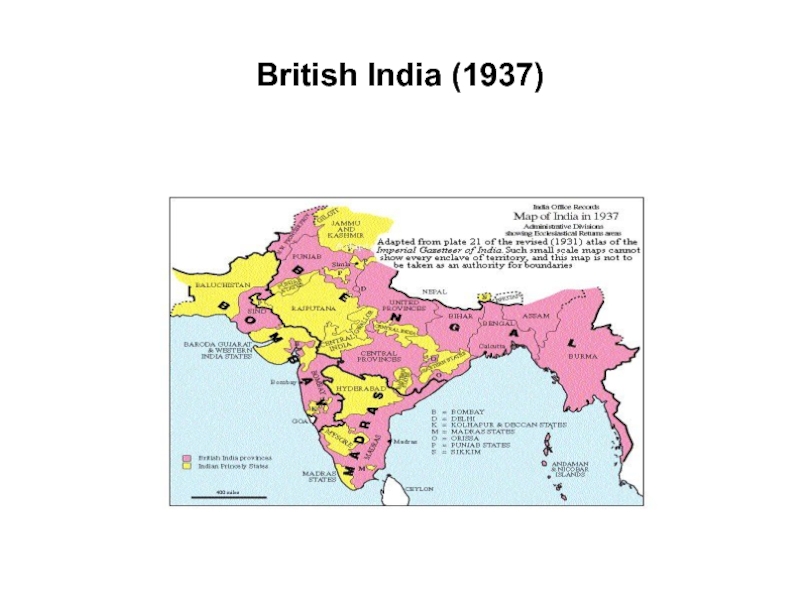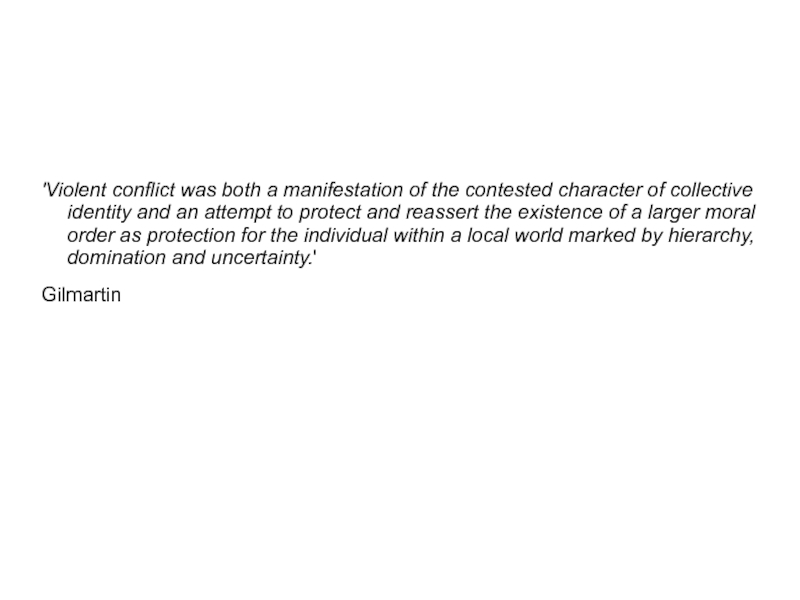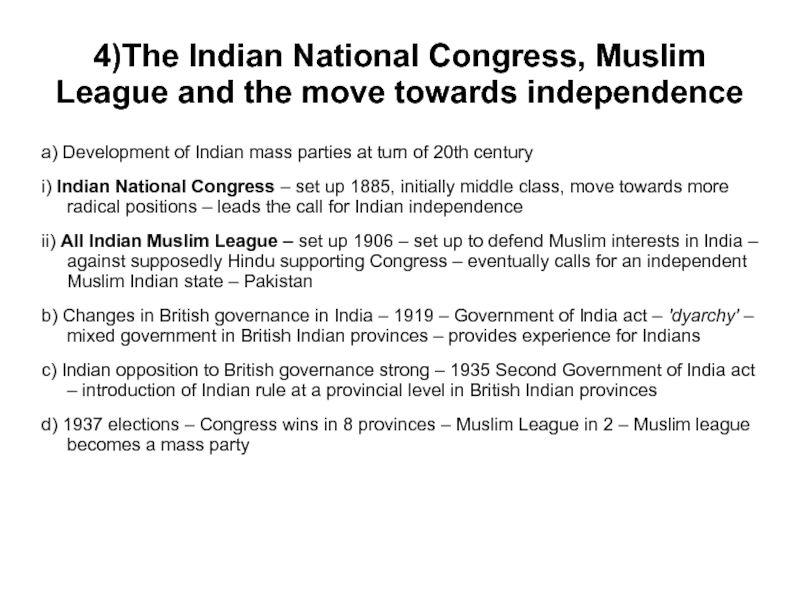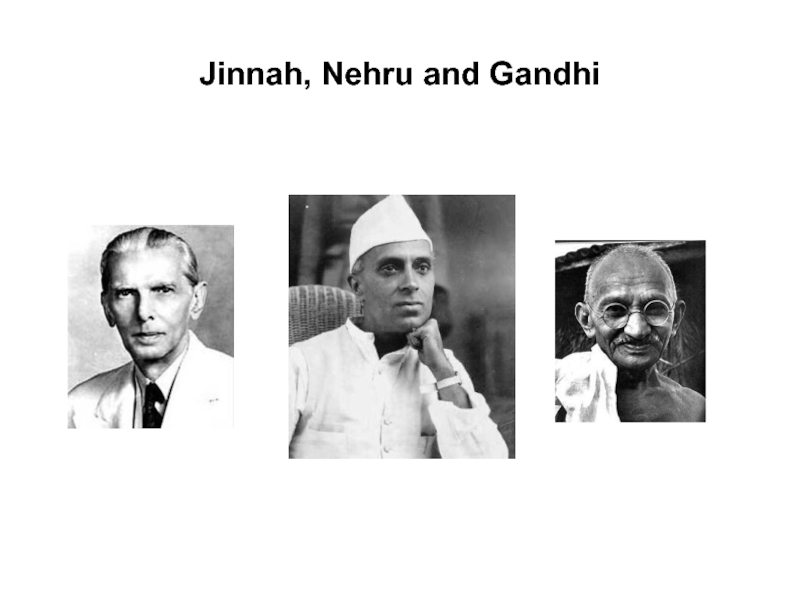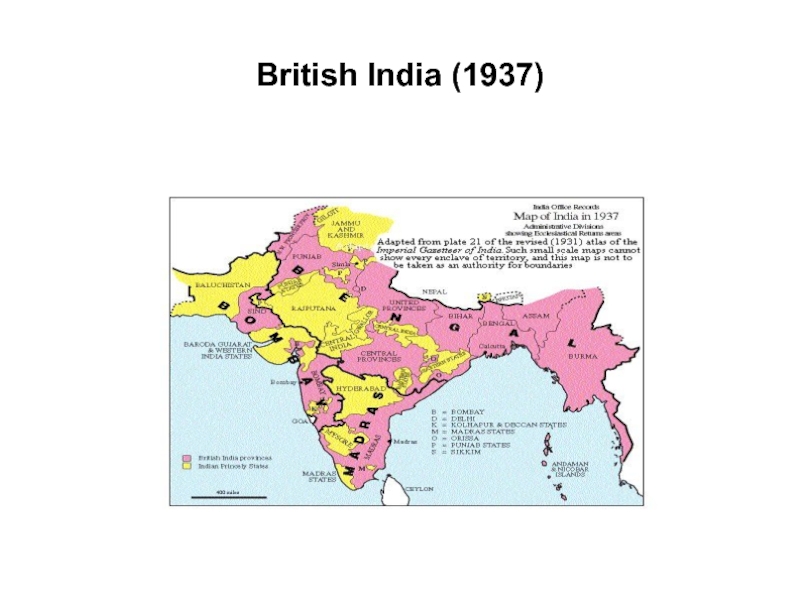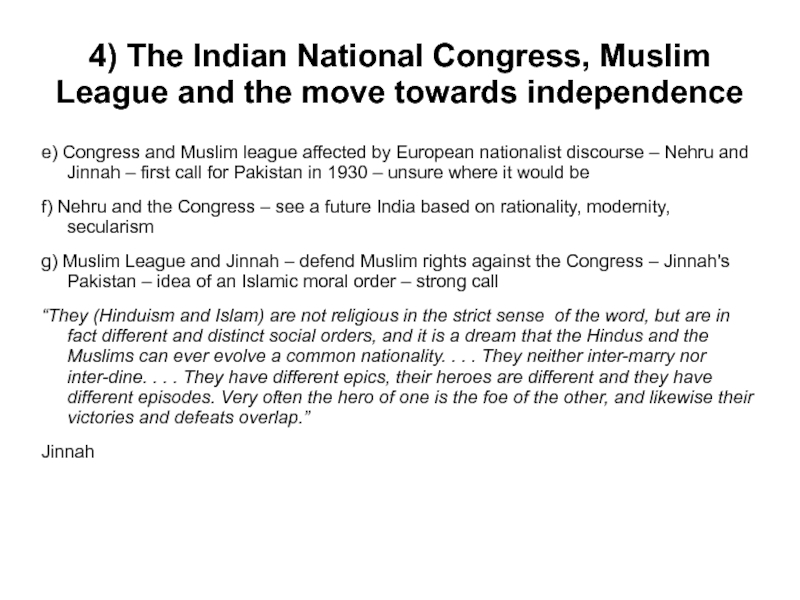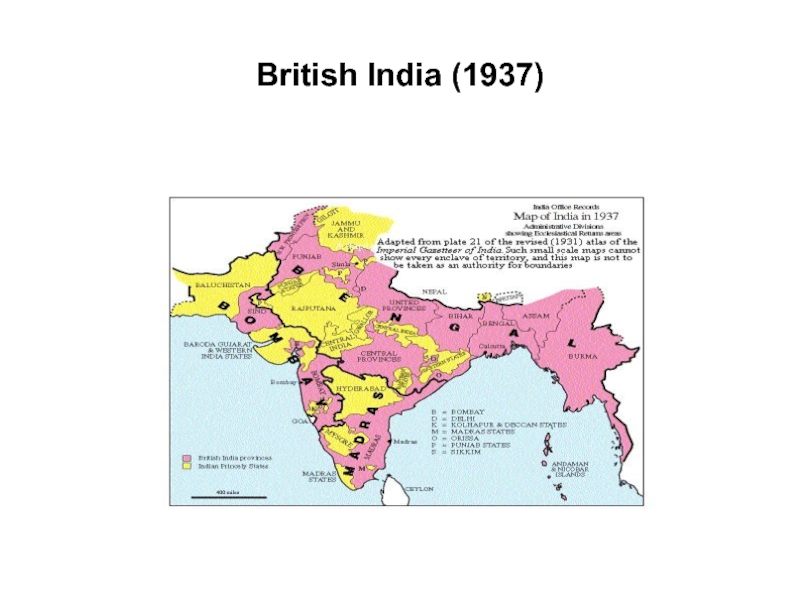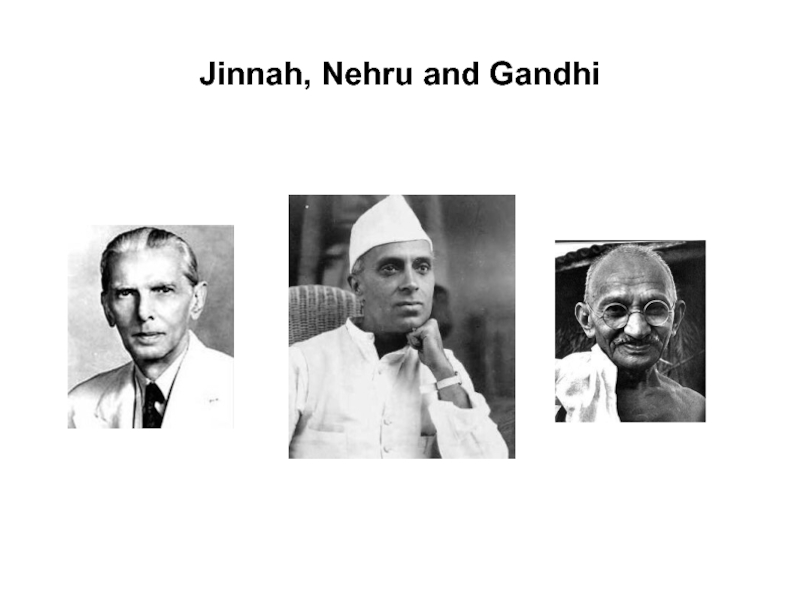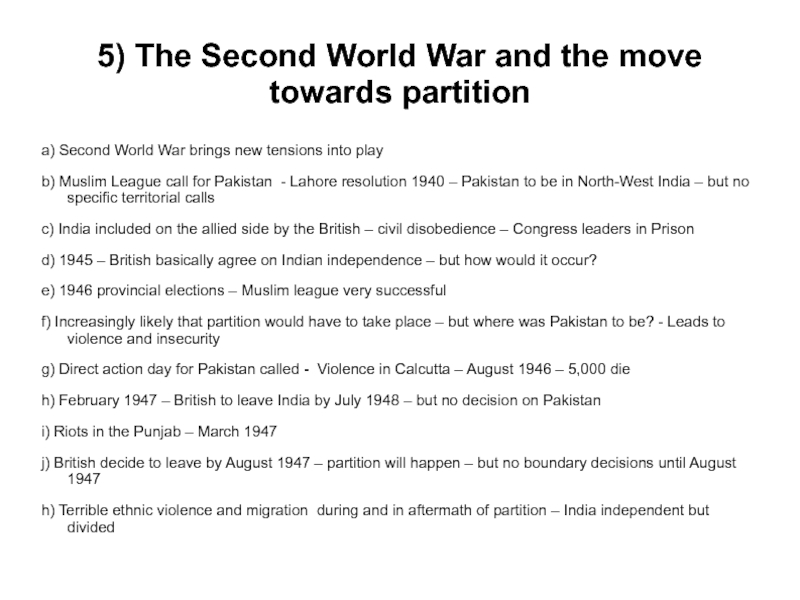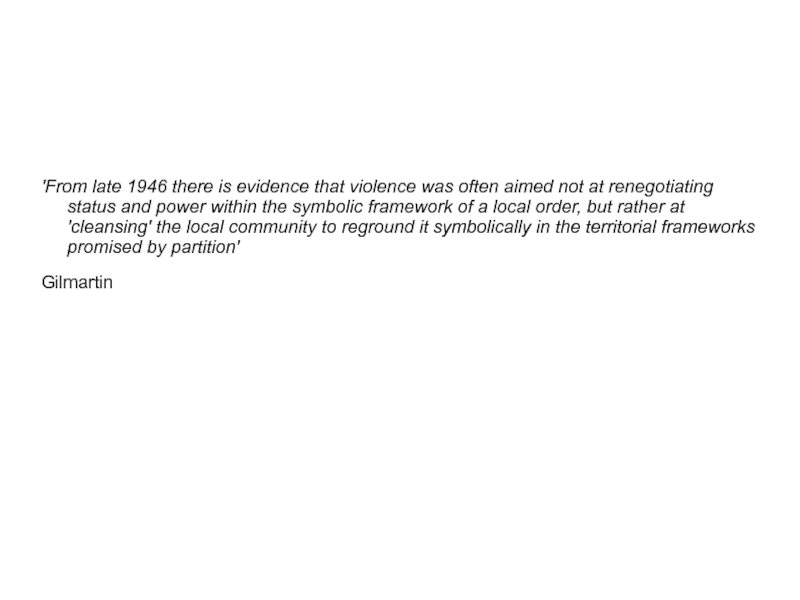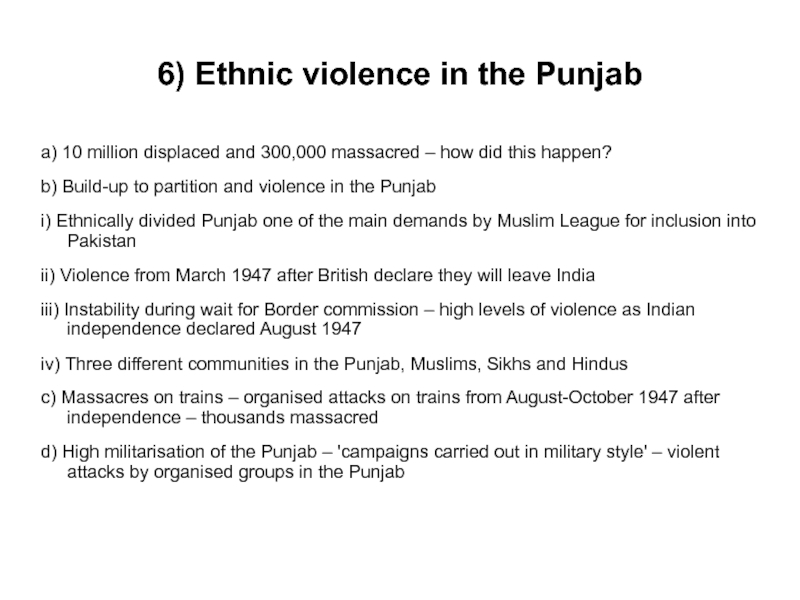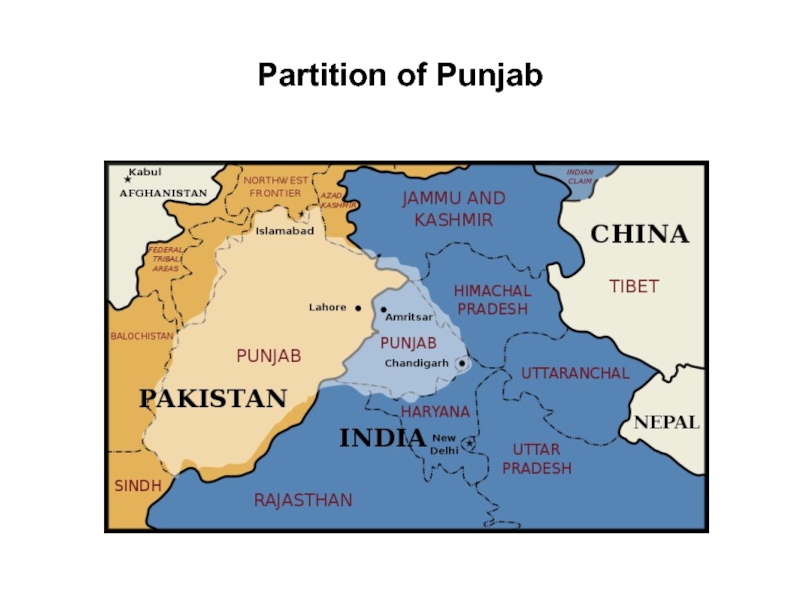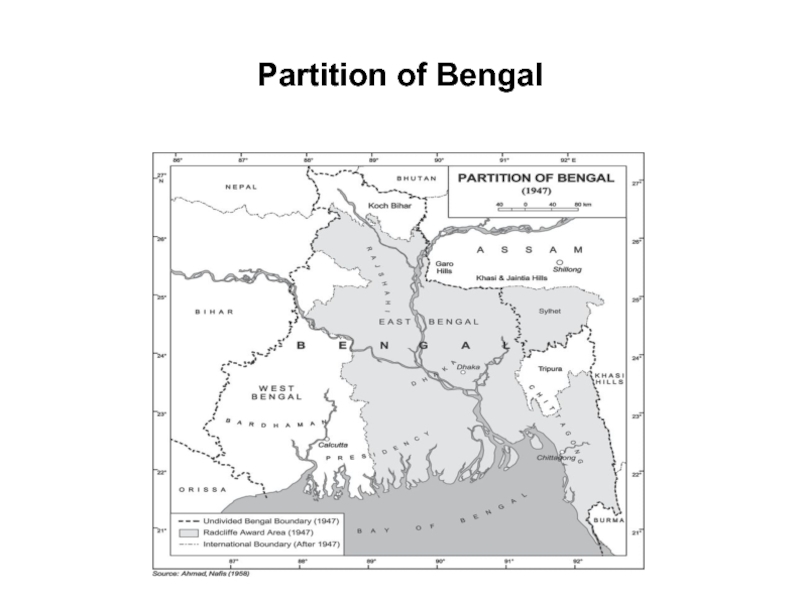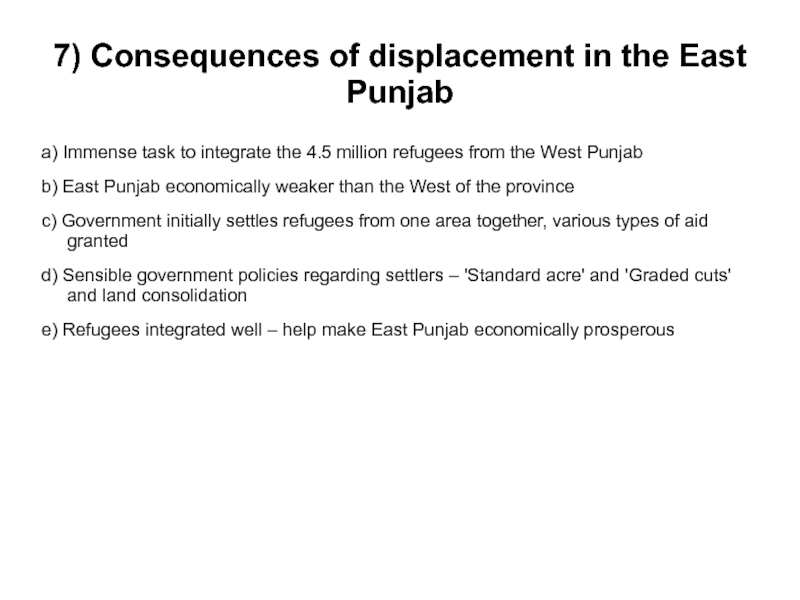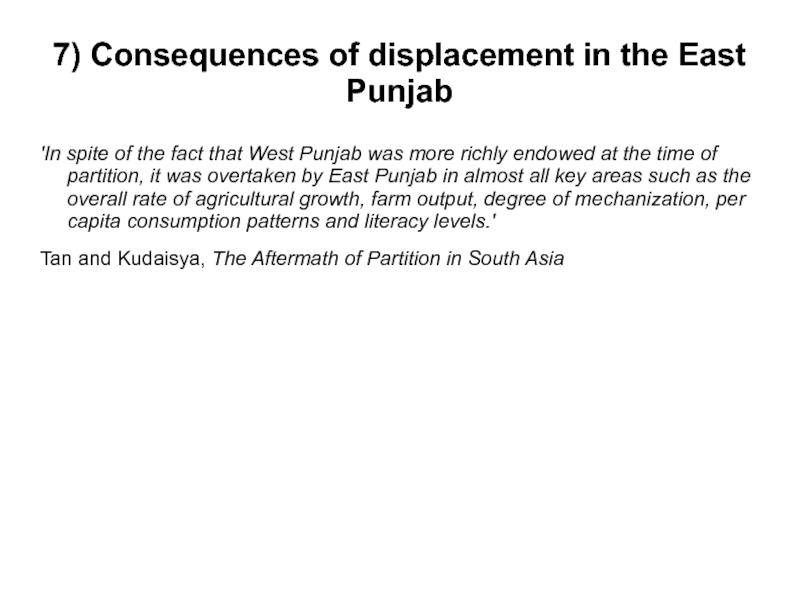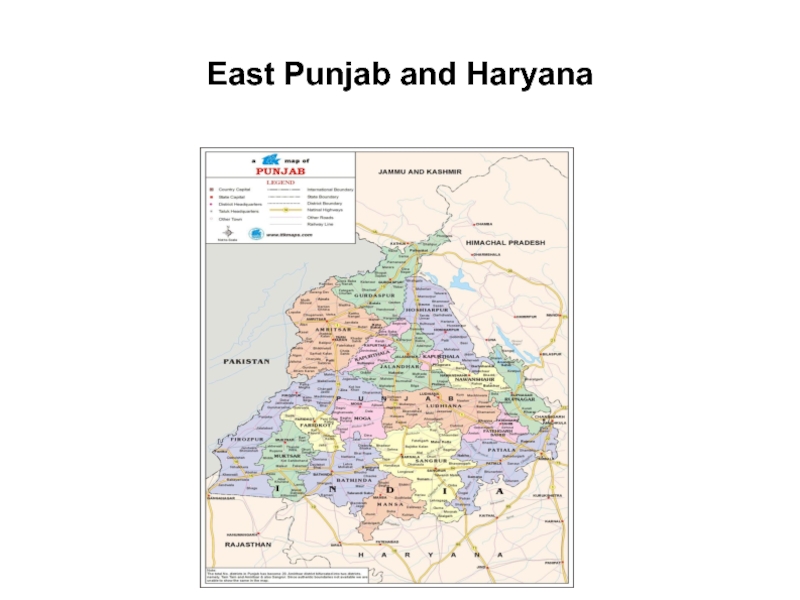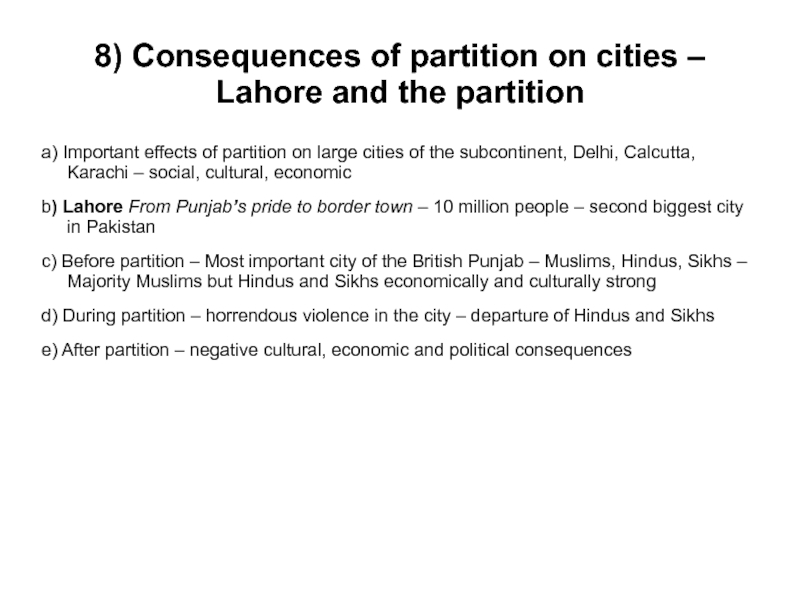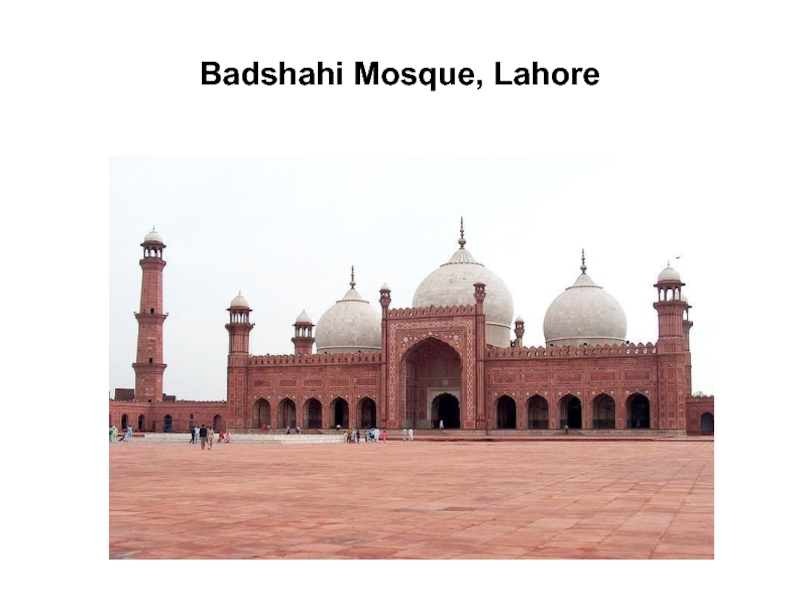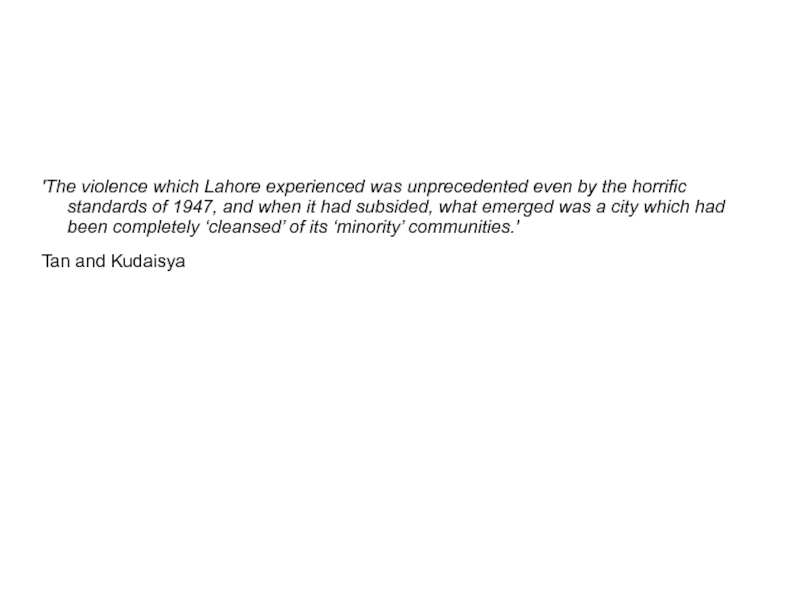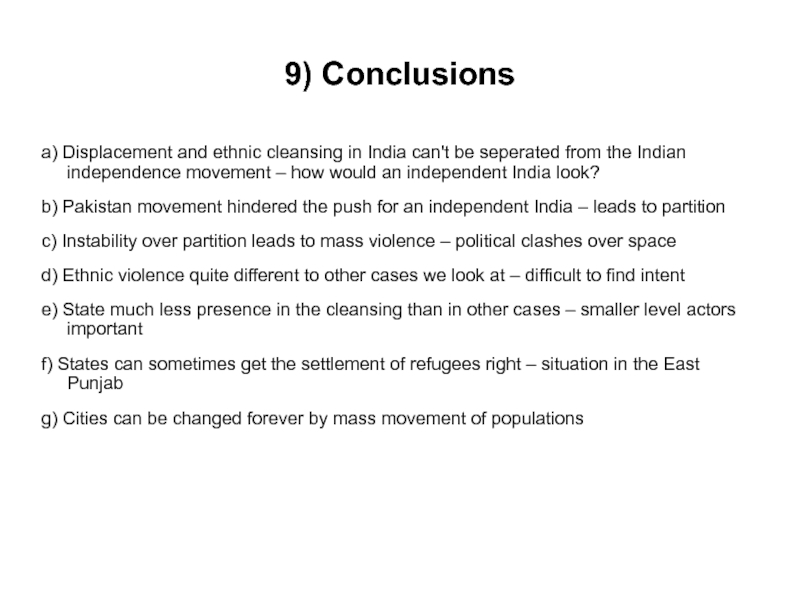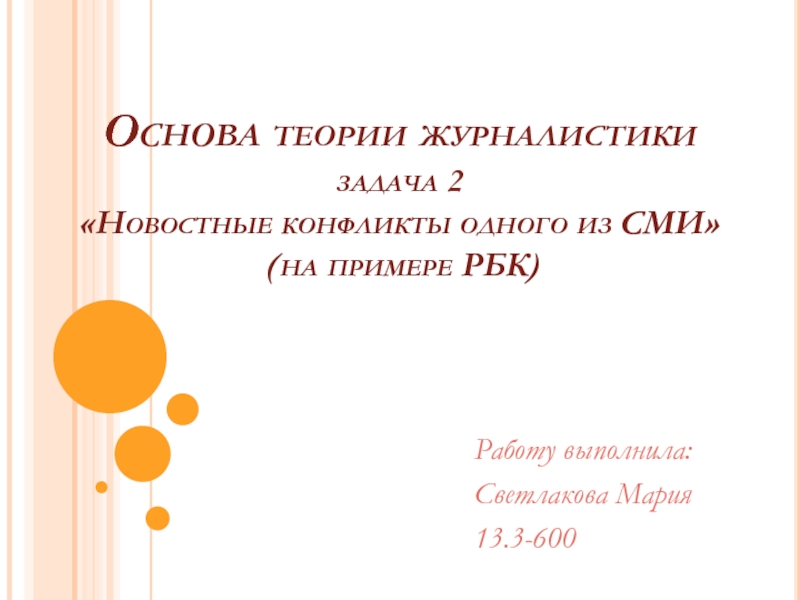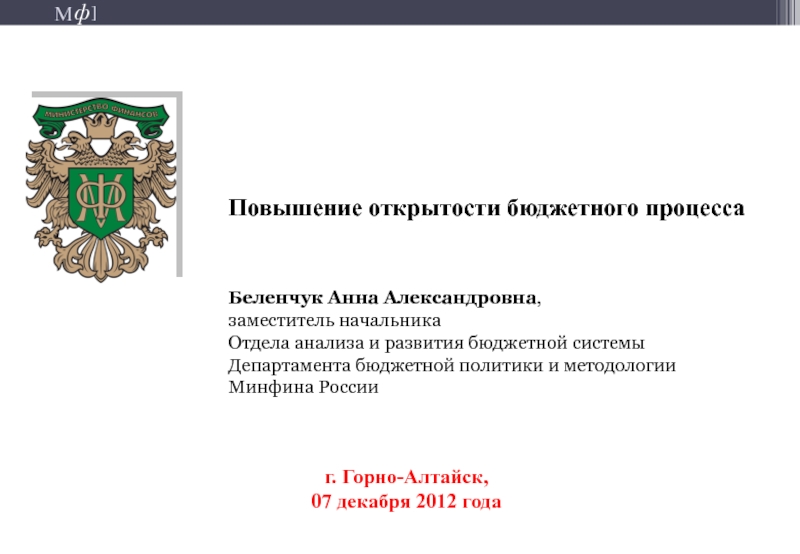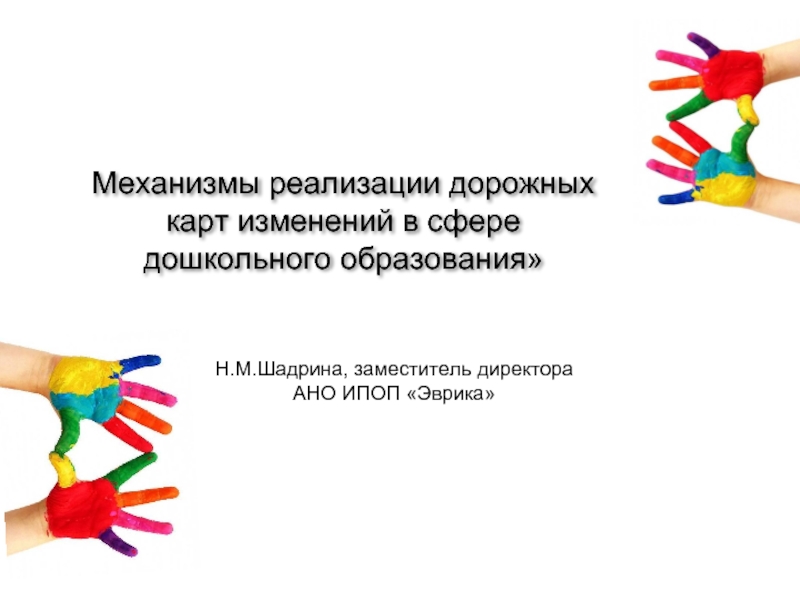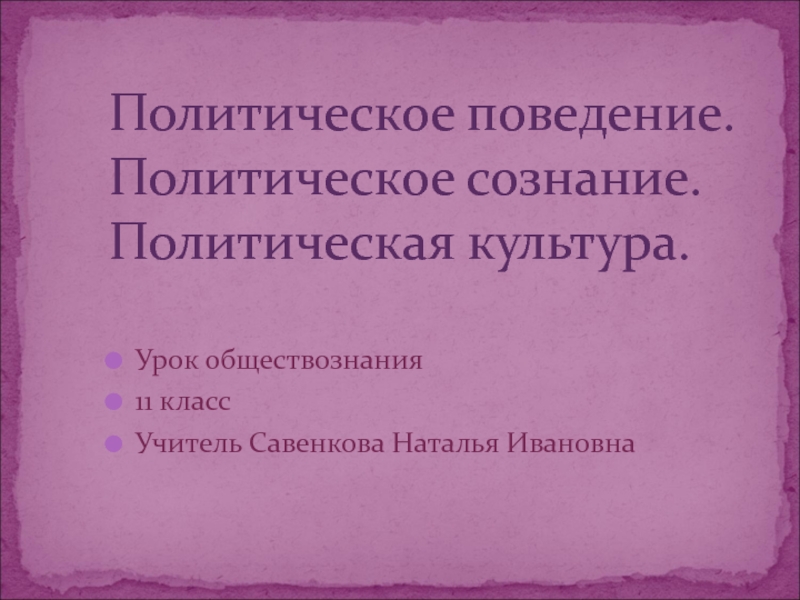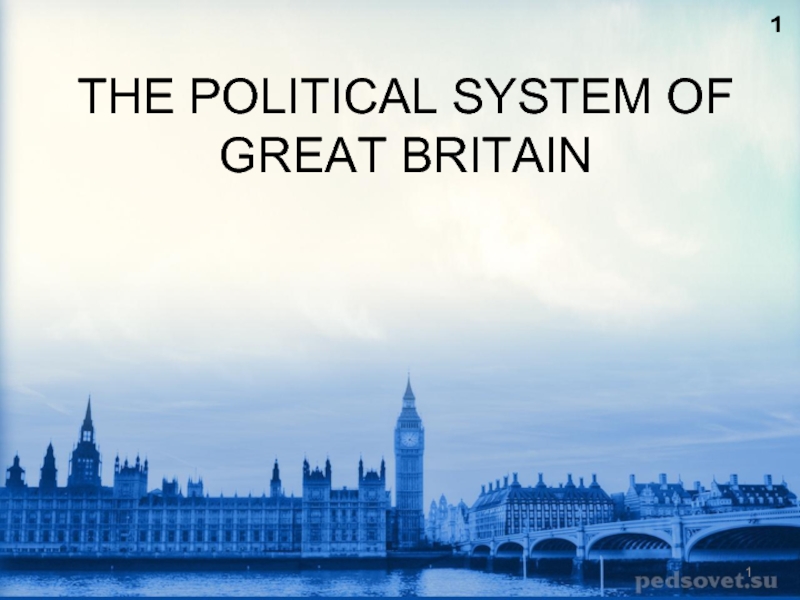- Главная
- Разное
- Дизайн
- Бизнес и предпринимательство
- Аналитика
- Образование
- Развлечения
- Красота и здоровье
- Финансы
- Государство
- Путешествия
- Спорт
- Недвижимость
- Армия
- Графика
- Культурология
- Еда и кулинария
- Лингвистика
- Английский язык
- Астрономия
- Алгебра
- Биология
- География
- Детские презентации
- Информатика
- История
- Литература
- Маркетинг
- Математика
- Медицина
- Менеджмент
- Музыка
- МХК
- Немецкий язык
- ОБЖ
- Обществознание
- Окружающий мир
- Педагогика
- Русский язык
- Технология
- Физика
- Философия
- Химия
- Шаблоны, картинки для презентаций
- Экология
- Экономика
- Юриспруденция
The Partition of India презентация
Содержание
- 1. The Partition of India
- 2. Indian Subcontinent today
- 3. Map of the partition of India
- 4. Lecture rundown 1) Partition: Numbers and figures
- 5. 1) Partition numbers and figures 1)
- 6. Map of the partition of India
- 7. Partition of Punjab
- 8. Partition of Bengal
- 9. 2) Indian history – and the move
- 10. Expansion of East India Company rule in India
- 11. 3) British direct rule and the emergence
- 12. British India (1937)
- 13. 'Violent conflict was both a
- 14. 4)The Indian National Congress, Muslim League and
- 15. Jinnah, Nehru and Gandhi
- 16. British India (1937)
- 17. 4) The Indian National Congress, Muslim League
- 18. British India (1937)
- 19. Jinnah, Nehru and Gandhi
- 20. 5) The Second World War and the
- 21. 'From late 1946 there is
- 22. 6) Ethnic violence in the Punjab a)
- 23. Partition of Punjab
- 24. Partition of Bengal
- 25. 7) Consequences of displacement in the East
- 26. 7) Consequences of displacement in the East
- 27. East Punjab and Haryana
- 28. 8) Consequences of partition on cities –
- 29. Partition of Punjab
- 30. Badshahi Mosque, Lahore
- 31. 'The violence which Lahore experienced
- 32. 9) Conclusions a) Displacement and ethnic cleansing
Слайд 4Lecture rundown
1) Partition: Numbers and figures
2) Indian history – and the
3) British direct rule and the emergence of an Indian public sphere
4) The Indian National Congress, Muslim League and the move towards independence
5) The Second World War and the move towards partition
6) Ethnic violence in the Punjab
7) Consequences of displacement in the East Punjab
8) Consequences of partition on cities – Lahore and the partition
9) Conclusions
Слайд 51) Partition numbers and figures
1) Partition of the Punjab
a) Refugee crisis
Approximately
Approximately 5.5 million refugees (Muslims) leave India for Pakistan
b) Massacres
Approximately 350,000 killed in Inter-religious (communal) violence
2) Partition of Bengal
Approximately 2.5 million Hindus leave East Pakistan for India
Approximately 700,000 Muslims leave West Bengal for East Pakistan
Overall:
Large numbers but only 3% of Indian population displaced – way smaller proportions compared to Poland after Second World War
Слайд 92) Indian history – and the move towards British dominance
a) Religion
b) The dominance of the Mughal empire – 16th onwards – Muslim elites, Hindu masses
c) British East India trading posts established early 17th century, Bombay (Mumbai), Madras (Chennai), Calcutta (Kolkatta)
d) Mid 18th century British East India company dominates India
Слайд 113) British direct rule and the emergence of an Indian public
a) 1857 Indian rebellion against East India company forces Britain to impose direct rule on most of India
b) Two different kinds of rule – British Indian provinces and 600 'princely states'
c) British rule through local elites but allow Indians space to practice religion in the public arena – religious public sphere opens up
d) Muslims 20% of Indian population – show their identity through local power structures and ideas of a Muslim moral order
e) Main way of showing identity in India late 19th century through religion – often this causes riots between and among different groups
f) End of nineteenth century, emergence of an Indian public sphere – secular public sphere emerges – 'public meetings instead of mosques'
Слайд 13
'Violent conflict was both a manifestation of the contested character of
Gilmartin
Слайд 144)The Indian National Congress, Muslim League and the move towards independence
a) Development of Indian mass parties at turn of 20th century
i) Indian National Congress – set up 1885, initially middle class, move towards more radical positions – leads the call for Indian independence
ii) All Indian Muslim League – set up 1906 – set up to defend Muslim interests in India – against supposedly Hindu supporting Congress – eventually calls for an independent Muslim Indian state – Pakistan
b) Changes in British governance in India – 1919 – Government of India act – 'dyarchy' – mixed government in British Indian provinces – provides experience for Indians
c) Indian opposition to British governance strong – 1935 Second Government of India act – introduction of Indian rule at a provincial level in British Indian provinces
d) 1937 elections – Congress wins in 8 provinces – Muslim League in 2 – Muslim league becomes a mass party
Слайд 174) The Indian National Congress, Muslim League and the move towards
e) Congress and Muslim league affected by European nationalist discourse – Nehru and Jinnah – first call for Pakistan in 1930 – unsure where it would be
f) Nehru and the Congress – see a future India based on rationality, modernity, secularism
g) Muslim League and Jinnah – defend Muslim rights against the Congress – Jinnah's Pakistan – idea of an Islamic moral order – strong call
“They (Hinduism and Islam) are not religious in the strict sense of the word, but are in fact different and distinct social orders, and it is a dream that the Hindus and the Muslims can ever evolve a common nationality. . . . They neither inter-marry nor inter-dine. . . . They have different epics, their heroes are different and they have different episodes. Very often the hero of one is the foe of the other, and likewise their victories and defeats overlap.”
Jinnah
Слайд 205) The Second World War and the move towards partition
a) Second
b) Muslim League call for Pakistan - Lahore resolution 1940 – Pakistan to be in North-West India – but no specific territorial calls
c) India included on the allied side by the British – civil disobedience – Congress leaders in Prison
d) 1945 – British basically agree on Indian independence – but how would it occur?
e) 1946 provincial elections – Muslim league very successful
f) Increasingly likely that partition would have to take place – but where was Pakistan to be? - Leads to violence and insecurity
g) Direct action day for Pakistan called - Violence in Calcutta – August 1946 – 5,000 die
h) February 1947 – British to leave India by July 1948 – but no decision on Pakistan
i) Riots in the Punjab – March 1947
j) British decide to leave by August 1947 – partition will happen – but no boundary decisions until August 1947
h) Terrible ethnic violence and migration during and in aftermath of partition – India independent but divided
Слайд 21
'From late 1946 there is evidence that violence was often aimed
Gilmartin
Слайд 226) Ethnic violence in the Punjab
a) 10 million displaced and 300,000
b) Build-up to partition and violence in the Punjab
i) Ethnically divided Punjab one of the main demands by Muslim League for inclusion into Pakistan
ii) Violence from March 1947 after British declare they will leave India
iii) Instability during wait for Border commission – high levels of violence as Indian independence declared August 1947
iv) Three different communities in the Punjab, Muslims, Sikhs and Hindus
c) Massacres on trains – organised attacks on trains from August-October 1947 after independence – thousands massacred
d) High militarisation of the Punjab – 'campaigns carried out in military style' – violent attacks by organised groups in the Punjab
Слайд 257) Consequences of displacement in the East Punjab
a) Immense task to
b) East Punjab economically weaker than the West of the province
c) Government initially settles refugees from one area together, various types of aid granted
d) Sensible government policies regarding settlers – 'Standard acre' and 'Graded cuts' and land consolidation
e) Refugees integrated well – help make East Punjab economically prosperous
Слайд 267) Consequences of displacement in the East Punjab
'In spite of the
Tan and Kudaisya, The Aftermath of Partition in South Asia
Слайд 288) Consequences of partition on cities – Lahore and the partition
a)
b) Lahore From Punjab’s pride to border town – 10 million people – second biggest city in Pakistan
c) Before partition – Most important city of the British Punjab – Muslims, Hindus, Sikhs – Majority Muslims but Hindus and Sikhs economically and culturally strong
d) During partition – horrendous violence in the city – departure of Hindus and Sikhs
e) After partition – negative cultural, economic and political consequences
Слайд 31
'The violence which Lahore experienced was unprecedented even by the horrific
Tan and Kudaisya
Слайд 329) Conclusions
a) Displacement and ethnic cleansing in India can't be seperated
b) Pakistan movement hindered the push for an independent India – leads to partition
c) Instability over partition leads to mass violence – political clashes over space
d) Ethnic violence quite different to other cases we look at – difficult to find intent
e) State much less presence in the cleansing than in other cases – smaller level actors important
f) States can sometimes get the settlement of refugees right – situation in the East Punjab
g) Cities can be changed forever by mass movement of populations
